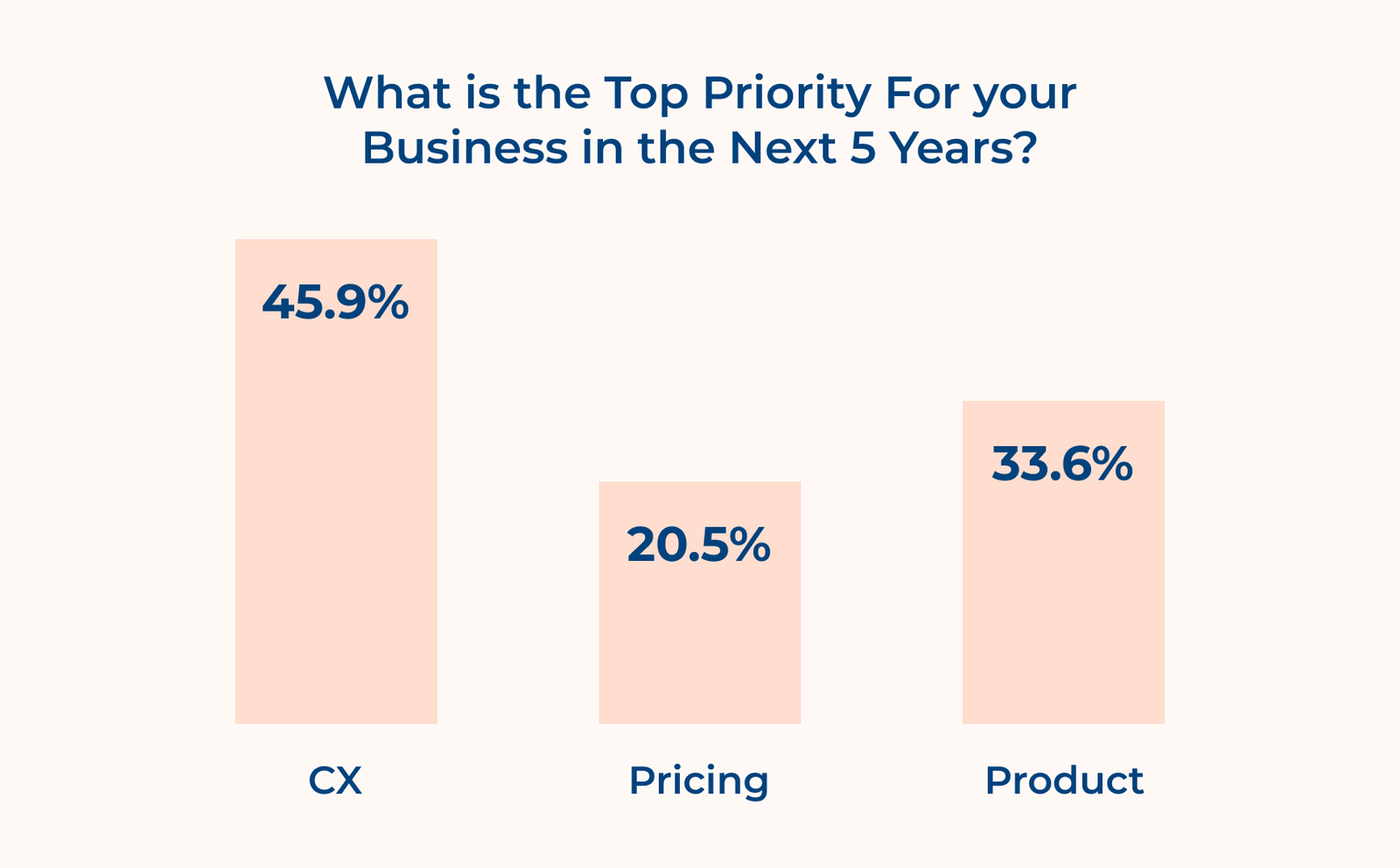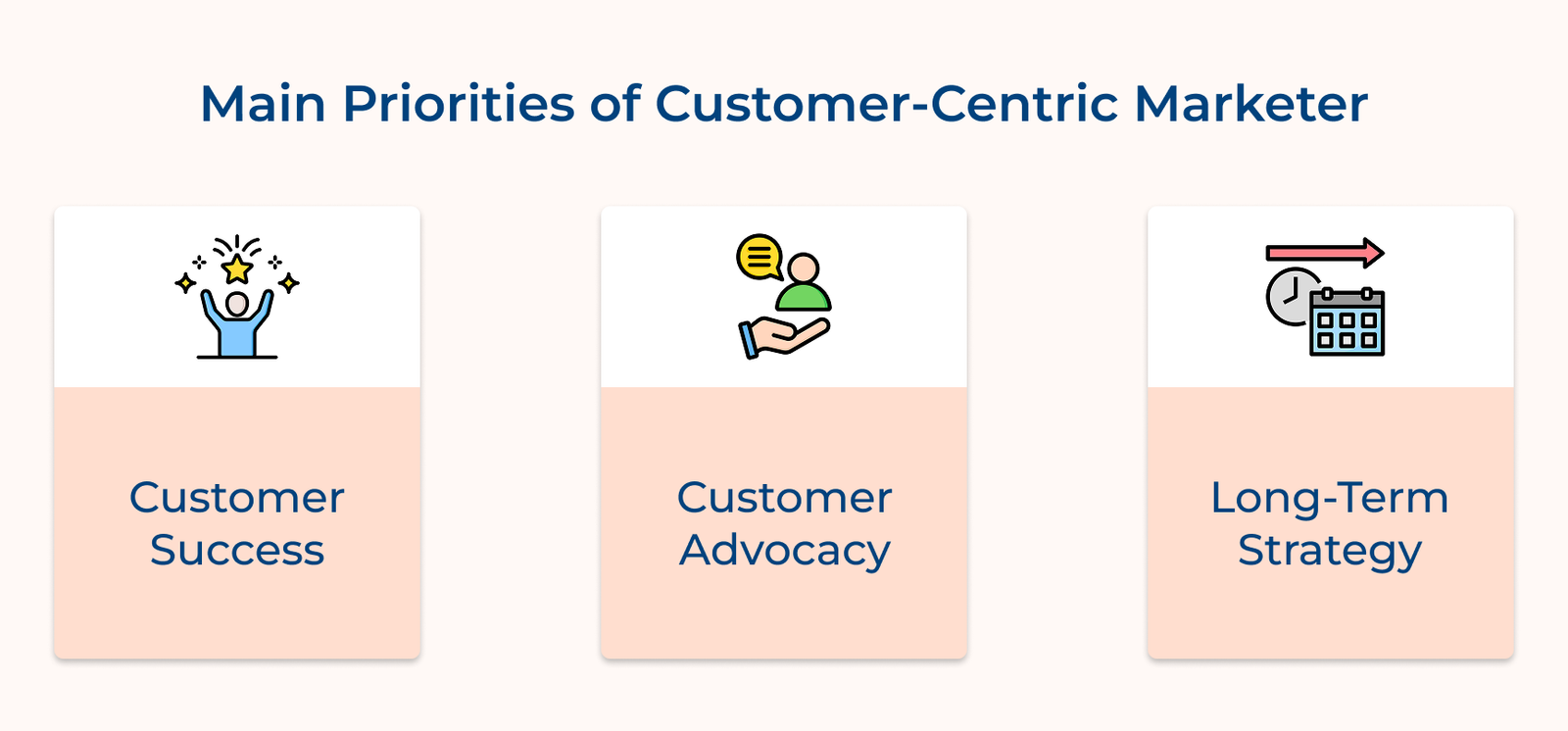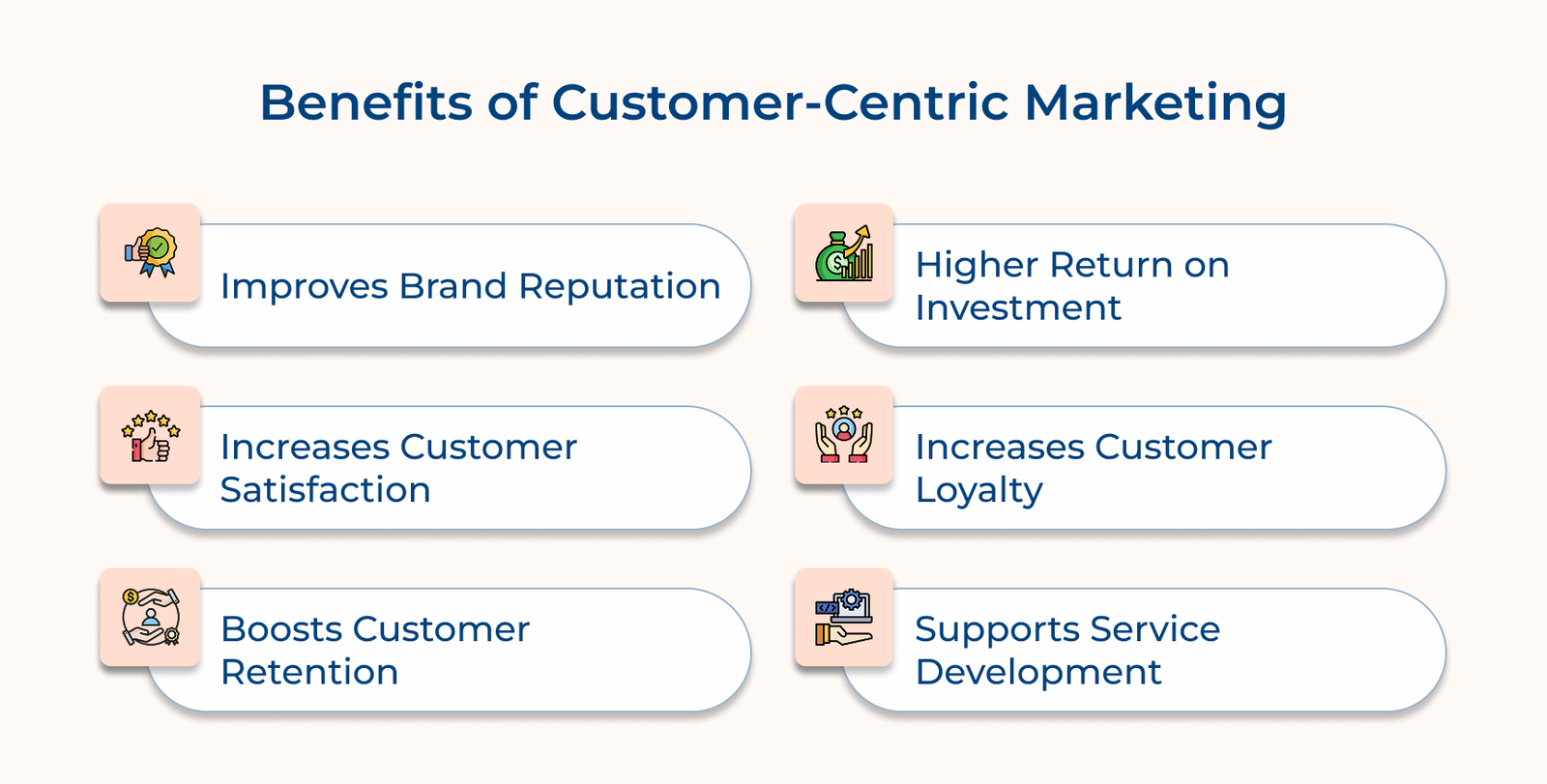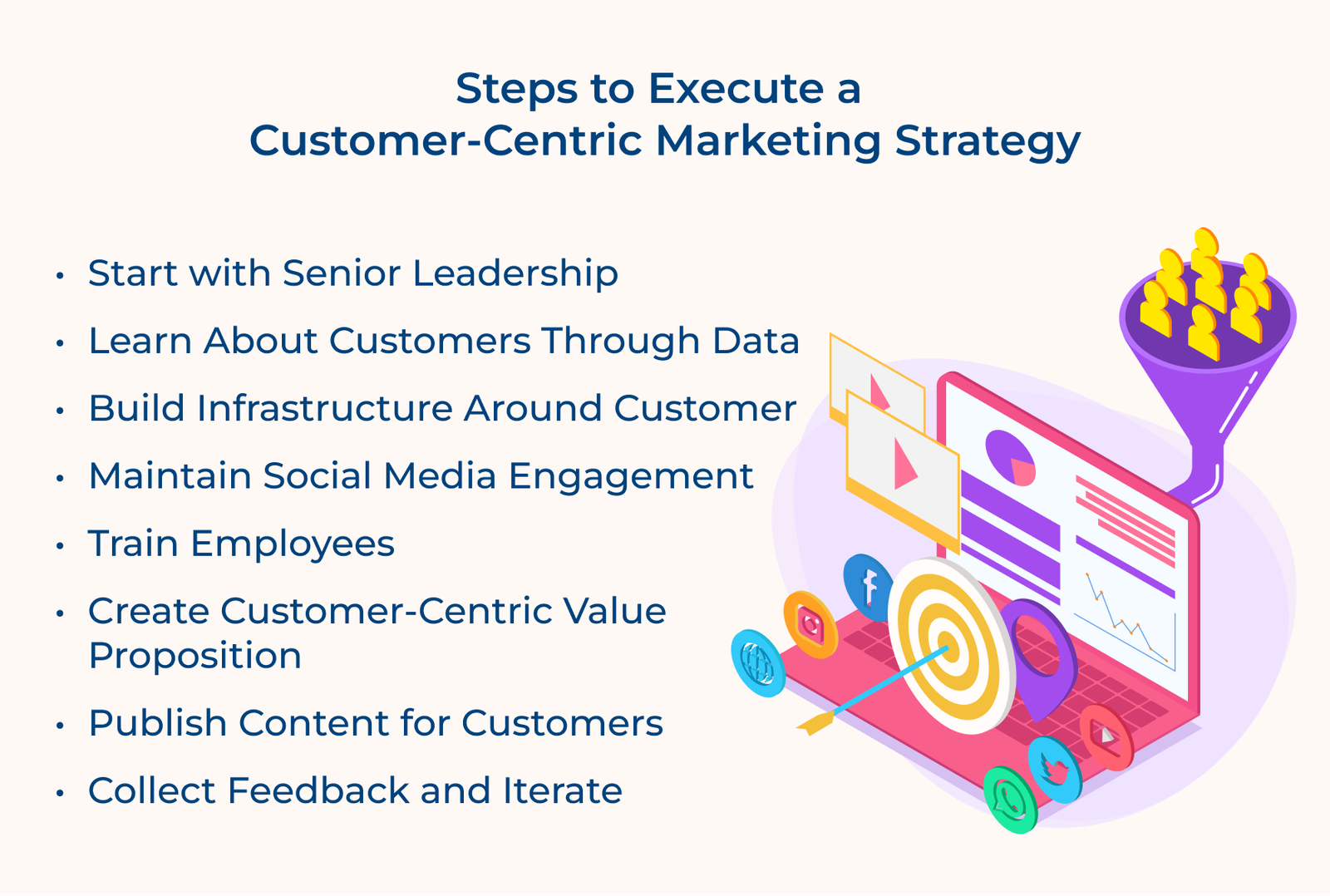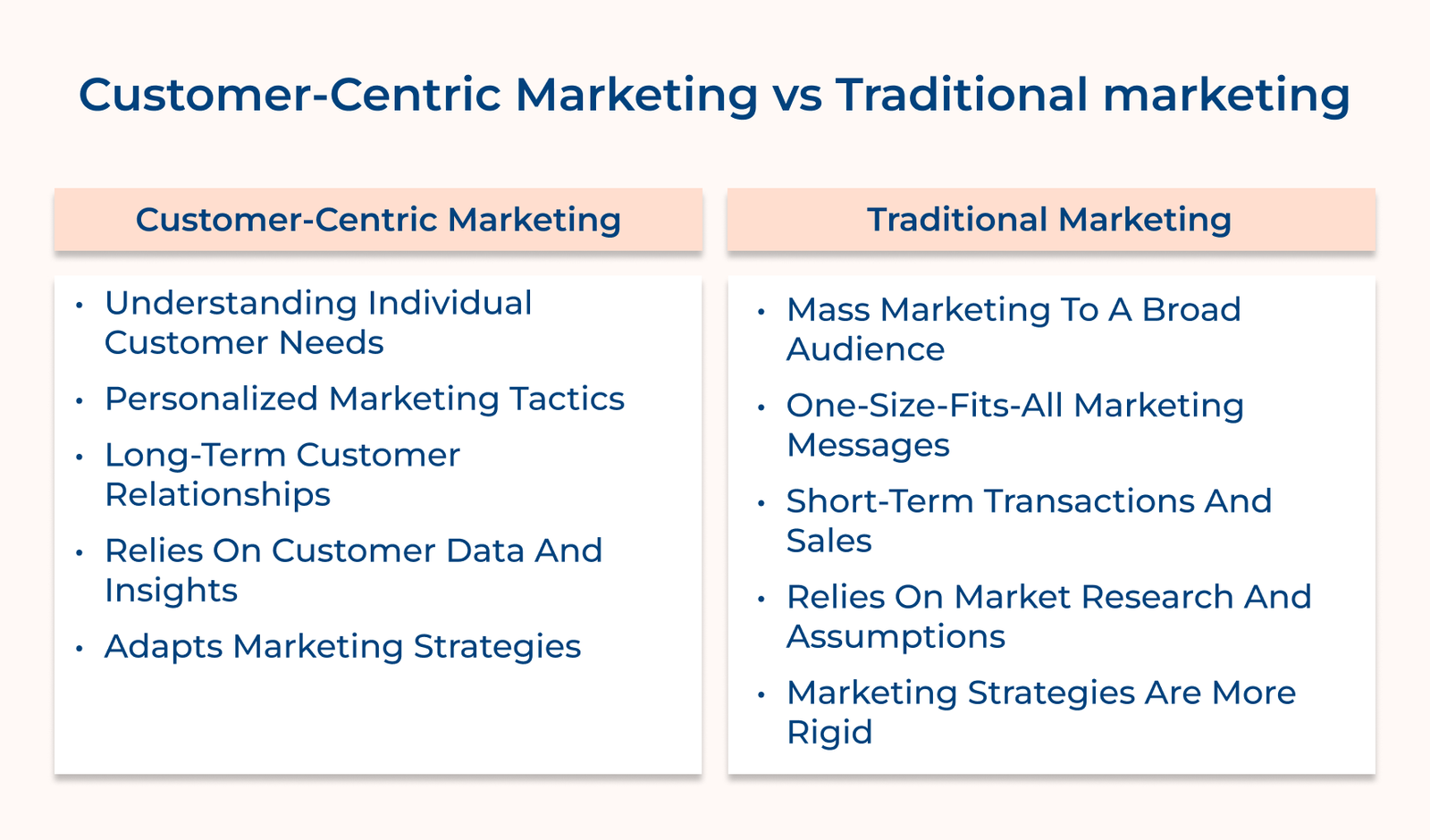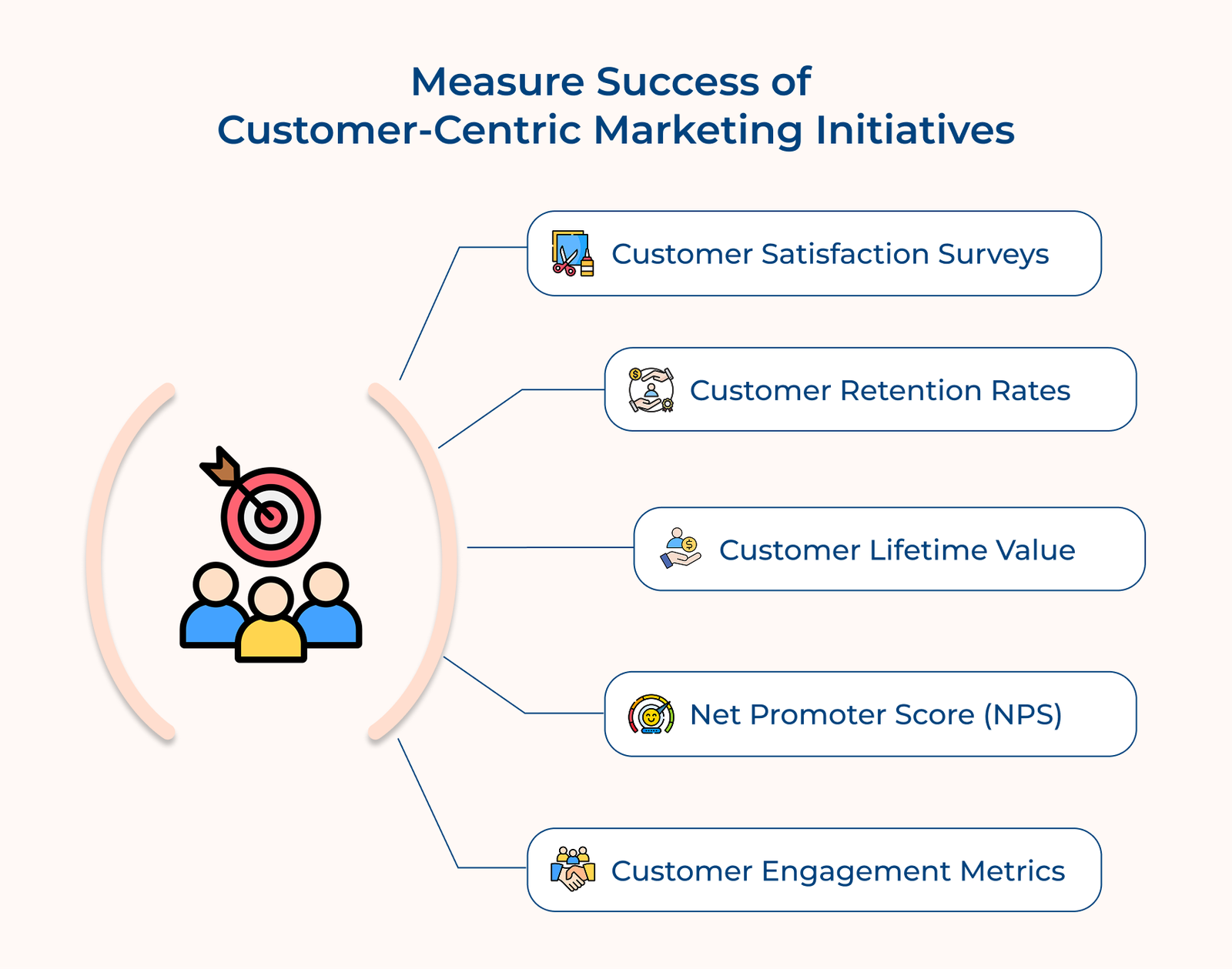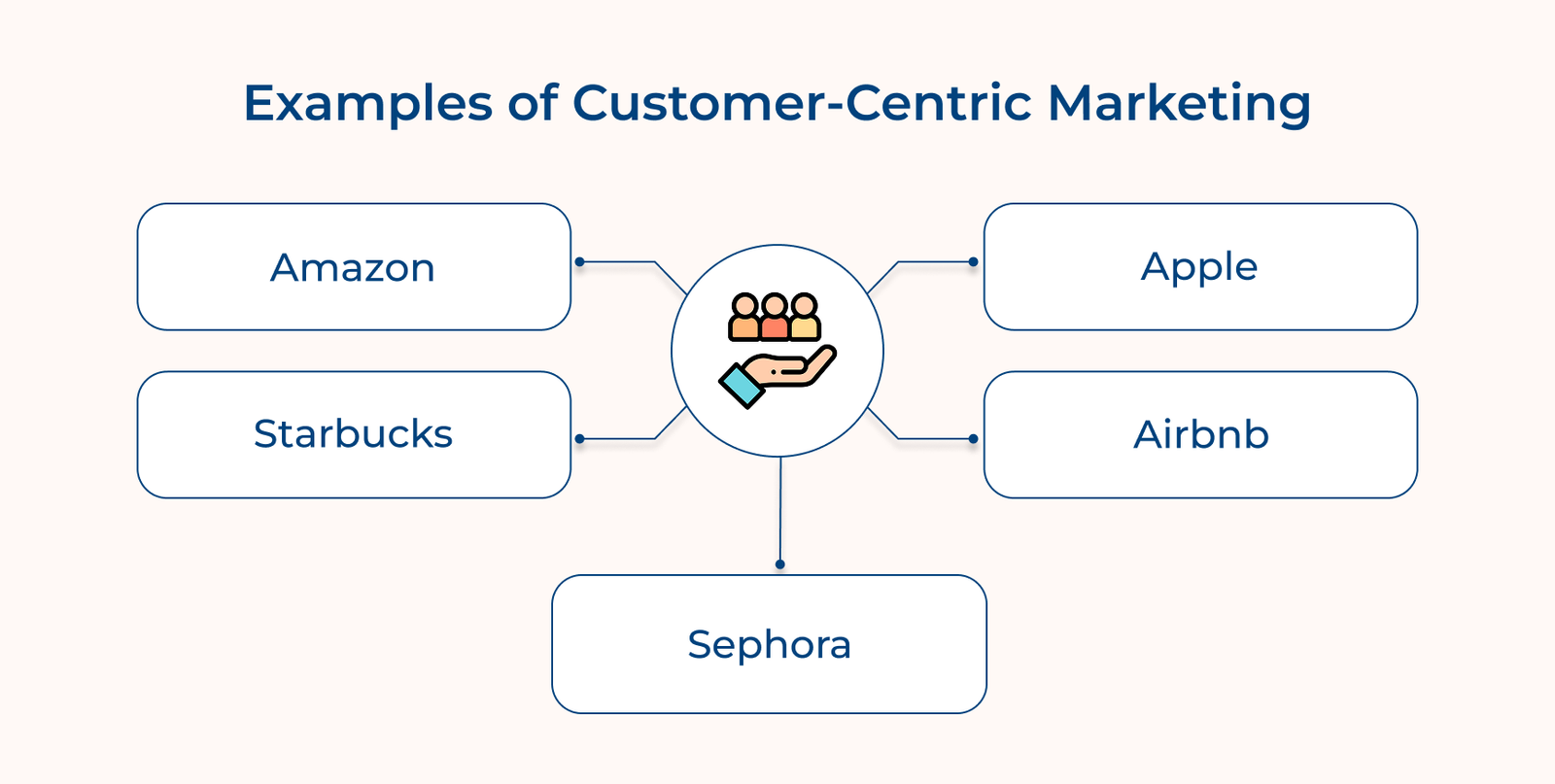1. Start with Senior Leadership
Senior leadership sets the tone for the entire organization and plays a key role in aligning all departments toward a common goal of satisfying customer needs. When senior leadership prioritizes customer satisfaction and loyalty, the commitment filters down the entire organization. The alignment ensures that all decisions and actions taken by the company are in the best interest of the customer.
Let’s assume that a company that starts with senior leadership in building a consumer-centric strategy may prioritize investing in customer research and feedback mechanisms. A data-driven approach enables the company to gain deeper insights into customer preferences, allowing them to customize their marketing efforts effectively.
Best practices:
- Including customer satisfaction metrics in senior leadership KPIs.
- Conducting regular meetings on customer feedback and insights.
- Encouraging cross-department collaboration to ensure a unified approach to meeting customer needs.
2. Learn About the Customers Through Data
Understanding the customers is crucial in developing a successful marketing strategy. One effective way is by learning about your customers through data. Examining data like demographics, behaviors and preferences can provide valuable insights. The step is crucial for developing a customer-centric marketing strategy, as it enables you to customize offerings to address the specific needs of your customers.
Let’s consider that a business discovers through data analysis that a significant portion of its customers are young professionals who value convenience. They can focus on providing fast and easy online shopping experiences.
Pro tips:
- Utilize analytics tools: Use tools like Google Analytics or social media insights to track customer interactions and behaviors.
- Conduct surveys and feedback sessions: Engage directly with the customers to gather information about their preferences and experiences.
- Segment the audience: Divide the customer base into smaller groups based on shared characteristics to better target the marketing efforts.
3. Build Infrastructure Around the Customer
The step involves creating a seamless experience for customers across various platforms and channels. Attention to various touchpoints, including social media, email, websites and in-store interactions can enhance your understanding of customer preferences. Businesses can also invest in CRM systems, marketing automation tools and data analytics software to build the infrastructure.
Let’s assume that a clothing retailer could use CRM software to track customer preferences and purchase history. They can then send personalized recommendations via email or social media.
Things to consider:
- Messaging: Consistent messaging across all channels.
- Personalization: Personalize infrastructure based on customer data.
- Analysis: Regularly analyzing and optimizing touchpoint performance.
4. Maintain Social Media Engagement
Maintaining social media engagement is a crucial step in executing a customer-centric marketing strategy. Businesses can enhance a loyal customer base by regularly engaging with their audience on social media platforms. Consistently sharing engaging content and responding to follower comments demonstrates that you value their feedback.
Let’s assume that a clothing boutique can maintain social media engagement. It can host live styling sessions, respond to inquiries and run interactive polls to gather feedback on potential new inventory.
Pro tips:
- Consistency is key: Post regularly to keep the audience interested and engaged.
- Respond promptly: Respond quickly to comments, messages and reviews to show customers that you value their feedback.
- Encourage interaction: Ask questions, run polls and host contests to encourage active participation from the followers.
5. Train the Employees
Training the employees is crucial when executing a customer-centric marketing strategy. Without adequate training, employees may lack the skills needed to effectively engage with customers and provide a positive experience. It can result in lost opportunities, dissatisfied customers and harm the reputation of the business.
Let’s consider that a company decided to implement a consumer-centric marketing strategy but neglected to train its employees on how to communicate and engage with customers. Consumers felt ignored, leading to a decrease in sales and a negative impact.
Ways to implement:
- Provide regular training sessions on customer service skills, communication techniques and product knowledge.
- Encourage role-playing exercises to simulate real-life customer interactions and practice problem-solving.
- Offer opportunities for employees to receive feedback and coaching on their performance, ensuring continuous improvement.
6. Create a Customer-Centric Value Proposition
A customer-centric value proposition serves as the foundation for all marketing efforts, ensuring that the messaging resonates with the audience. Without a well-defined, customer-centric value proposition, the marketing campaigns may fail to capture the attention of the target audience.
A skincare company recognized that their target customers were overwhelmed by the abundance of product choices and conflicting information. They developed a customer-centric value proposition focused on simplifying skincare routines through science-based, minimalist formulations. They are customized for individual skin types, meeting customers’ desire for effective yet straightforward solutions.
How to implement:
- Clear communication: Communicate the value proposition clearly and consistently across all marketing channels.
- Test and refine: Continuously test the value proposition with customers and refine it based on their feedback to ensure it remains relevant.
7. Publish Content the Customers Want and Need to Read
The step involves creating informative, educational or entertaining materials that address the customers’ interests and queries. A financial services firm publishes a collection of blog posts and guides focused on personal finance management. It covers topics like budgeting, saving for retirement and investment strategies. The content assists customers in making informed decisions and establishes the company as a trusted expert.
A fitness apparel brand shares workout routines, nutrition tips and motivational stories on their social media channels. The content appeals to their health-conscious customers and enhances a sense of community centered around an active lifestyle.
Pro tips:
- Conduct customer research: Analyze customer data, surveys and feedback to identify the interests they seek information about.
- Develop a content calendar: Create a range of content formats (blog posts, infographics, etc.) that cater to different customer preferences and stages of the buyer’s journey.
- Leverage customer-generated content: Feature user-generated content, such as reviews or social media posts, to provide relatable experiences for the audience.
8. Collect Feedback and Iterate
Collecting feedback and iteration based on feedback is vital to execute a successful customer-centric marketing strategy. Collecting feedback from the audience enables businesses to customize their marketing efforts to better address their needs. One important aspect of collecting feedback is the ability to identify areas for improvement in the marketing strategy.
A practical use case for collecting feedback and iteration is through customer surveys. Sending out surveys to the audience allows you to gather specific insights into their preferences, opinions and satisfaction with the brand. Tracking social media and online reviews can also offer valuable real-time feedback.
How to implement:
- Utilize feedback tools to gather data from surveys, reviews and social media channels.
- Analyze feedback data regularly to identify trends and areas for improvement.
- Act on feedback by adjusting the marketing strategies, products, or services based on the insights received.
How Does Customer-Centric Marketing Differ from Traditional Marketing Strategies?
Discover the key distinctions between customer-centric marketing and traditional marketing approaches.






